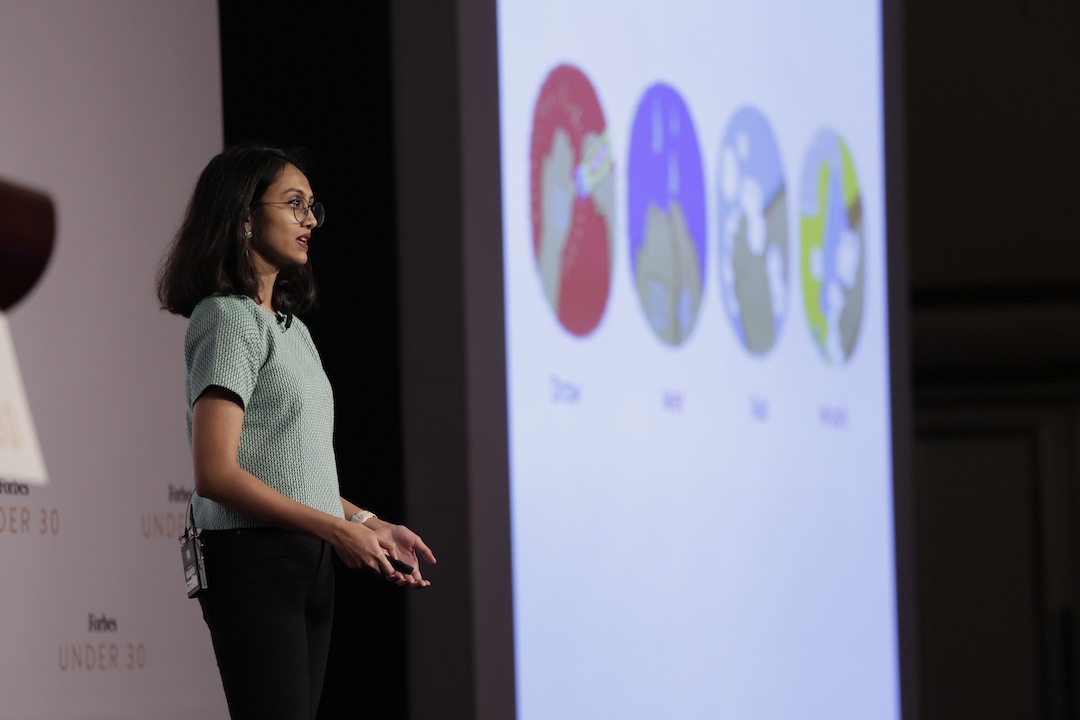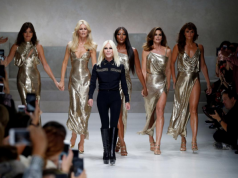
Did you know that handwashing can prevent the deaths of as much as 1.5 million children under five years old each year?
According to UNICEF, diarrhea is deadly for these many children and is the second most common cause of child deaths worldwide.
But how can children get into the habit of washing their hands? This is exactly the problem that a group of Indian industrial designers from the Parson’s School of Design in New York City sought to solve when they designed SoaPen, a colored marker with ink that turns into soapy lather.
At the Forbes Under 30 Summit Asia held Tuesday, July 25, at Solaire Resort and Casino, SoaPen cofounder Yogita Agrawal recalled how their invention landed her and her peers in this year’s Forbes 30 Under 30 Asia list for the healthcare and science fields, as well as won them the 2015 UNICEF Wearables for Good Challenge.
Upon learning the disturbing statistics on child under-five mortality, the team immediately thought the solution was to give soap to schools. But after visiting a primary school in Mumbai, they found that there was already soap. However, children were still washing their hands only with water.
They decided to “unlearn” their presumptions and to observe the schoolchildren’s behavior, instead. This revealed that soap was simply inaccessible to the children, as it was often kept inside of a closet rather than placed by the bathroom sink in fear that the children might waste or steal it. Unless the teachers accompanied the children to the bathroom, the students ended up washing only with water.
Even if they did use soap, the children would simply place it under the tap and not lather properly. Bar soap was messy to use, while liquid soap was “over-squirted” and wasted.
There was also no monitoring of whether they were washing their hands correctly. This was the case in public and private schools, Agrawal reported. The team also learned that children did not like washing their hands with soap, but loved drawing on their hands.
And so the team wondered: what if the children could draw with soap and be clean?

It took the team a year to transition from concept paper to prototype for SoaPen. Now, the soap-crayon comes in red, blue, and green. Kids can draw all over their hands, and when these come in contact with water, the drawing becomes soapy lather. The kids then rub their hands together and have fun while washing their hands.
The team brought soap from the bathroom to the classroom, so that teachers no longer had to accompany the children to check up on whether they were washing properly. The teachers could still monitor usage by looking out for leftover color marks on the students’ hands.
The children the team worked with drew with SoaPen all the time, but because of the economical application method, Agrawal explained, they could be creative but not wasteful.
The team continued to refine their prototype, which had nevertheless become so accepted and usable that it reached 3,000 children in less than two months. Each time they made changes in the design, they would get children to try the product. The kids didn’t like having “serious conversations” with the industrial designers, but would immediately get excited upon seeing the product, playing with it and teaching their own friends how to use it.
“The effectiveness of SoaPen in reaching out to children and making handwashing a habit has reinstated our belief that simple thoughtful changes to even age-old conventions can make rather big impacts,” Agrawal said.
.@teamsoapen stops by to give us a live demonstration of their soap crayon – promoting handwashing across schools in Mumbai #Under30Summit pic.twitter.com/zsWBFNtbBx
— Forbes Under 30 (@ForbesUnder30) July 24, 2017
A demonstration of SoaPen on the Forbes 30 Under 30 Asia Twitter account.
Learn more about SoaPen on www.soapen.com.









